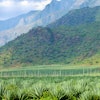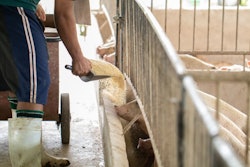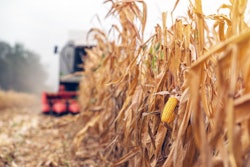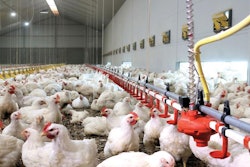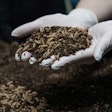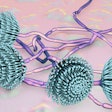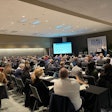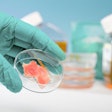
Dairy industry stakeholders talk sustainability and moves toward net-zero carbon emissions by 2050 at the 2021 Alltech ONE Ideas Conference.
Sustainability is and will remain a hot topic across all sectors of agriculture — and the dairy track of Alltech’s 2021 ONE Ideas Conference was no exception.
“Today, sustainability is moving in a completely different direction toward an outcome-based metric — CO2 equivalent — that’s what matters. This is driven by a much bigger societal expectation than before. … [Sustainability] is no longer nice for a business to have, it is a must have. It is a license to operate,” said Robert Erhard, Nestlé’s corporate sustainable agriculture development/head of dairy, during his talk, “Striving for net zero: How Nestlé is creating a more sustainable future.”
Erhard noted how governments are in the process of putting laws into place that will have consequences for companies that are not improving their carbon footprint.
Ag stakeholders need to take charge of their operations and supply chains get a handle on their full impact.
“We have to create a massive change in how we operate, how we source today, how we emit carbon today, for us to achieve the net zero by 2050,” he explained. “The mitigation techniques alone are insufficient to reach net zero. Net zero can only be achieved if carbon removal technologies, such as carbon sequestration in soil or in trees, or other alternative technologies are implemented to achieve the net-zero roadmap.”
Of Nestlé’s 92-million-ton carbon footprint, 70% is generated by ingredients, with half coming from dairy and livestock and the other half, the soil and the forest filler, i.e. the annual and perennial crops it utilizes.
Reductions are “an end-to-end operation. Not only what we control, but what is outside of our control. That means we have to influence our suppliers,” Erhard said.
This comment serves as a bellwether for what ingredient, additive and complete feed producers should come to expect in the decade ahead: the demands of the consumer and governments will continue to trickle down to shape procedures, sourcing and sustainable practices from field to feed mill to farm to fork.
Meanwhile, U.S. dairy producers are taking it upon themselves to get ahead with their voluntary sustainability commitment.
US dairy commits to stewardship
In the U.S., dairy production contributes 2% of all greenhouse gas emissions. A relatively low amount, but one that can — and will — be further reduced by 2050.
“Imagine a world where dairy is seen as an environmental solution,” said Karen Scanlon, executive vice president of environmental stewardship, Innovation Center for U.S. Dairy, a voluntary organization that works with leaders from across the dairy value chain to advance a shared social responsibility platform and demonstrate U.S. dairy’s collective commitment to provide the world responsibly produced dairy foods.
During her talk, “U.S. dairy: Making progress toward 2050 environmental goals,” Scanlon highlighted the progress U.S. dairy producers have made and where the industry plans to go in the years ahead.
In 2007, U.S. dairy farmers consulted a diverse group of stakeholders before developing and committing to a comprehensive, science-based approach to measure and improve dairy’s environmental footprint through an assessment of greenhouse gas emissions “from grass to glass.” Here, voluntary goals for greenhouse gas intensity reductions were established and have since impacted several key areas.
According to the Innovation Center for U.S. Dairy, due to these collaborative actions, “to produce a gallon of milk in 2017 it required 30% less water, 21% less land and a 19% smaller carbon footprint than it did in 2007.”
“Not every farm and not every company is doing everything, but every farm and company will and are doing something; and together the industry will make progress toward these collective goals,” she said.
Feed’s part in achieving net-zero carbon emissions
In 2020, the Innovation Center for U.S. Dairy “set aggressive new environmental sustainability goals to collectively achieve carbon neutral or better, optimize water use with maximize recycling, and improved water quality by optimizing the use of manure and nutrients” by 2050, Scanlon reported.
It divides its key strategies to meet the 2050 target into two groups: its “Processor Working Group” and its Net-Zero Initiative (NZI), an industrywide effort led by the six national dairy organizations, at the field and the farm level “to accelerate voluntary action on farms to reduce environmental impacts, while marrying that strategy with economic viability.”
NZI’s goal is to make sustainable practices and technologies more accessible, more affordable, and bring economic benefit to dairy farms, focusing its efforts in four areas: feed production and practice change, enteric methane reduction, on-farm energy efficiency and renewable energy usage, and manure handling and nutrient management.
According to Innovation Center for U.S. Dairy, feed production accounts for 26.4% of the dairy industry’s carbon footprint on the farm, and enteric methane reduction, which includes feed additives and optimized feed rations, account for 34.8%.
For example, moving forward, feed production practices can improve soil health, which can improve crop yield, sequester carbon and protect water quality, while providing economic opportunities and new revenue streams, i.e. renewable fertilizers and other manure-based products.
“Success for net-zero initiative requires addressing affordability of technology and practice solutions, closing the gap on data and research for more quantifiable outcomes, and making solutions accessible to farms of all sizes so that we can accelerate voluntary adoption across the industry,” she said.
This year the group will launch projects focused on feed production that will be shared broadly among the dairy community to “provide scientific accuracy and support the measurement of U.S. dairy’s greenhouse gas footprint.”
“It’s really going to set the stage for new market opportunities related to carbon, water quality and soil health,” she said.
The project is in collaboration with the U.S. Department of Agriculture’s Ag Research Service (USDA-ARS), the Soil Health Institute, with the Foundation for Food and Ag Research, and six dairy industry, research institutions and universities throughout the country.
Dairy industry buy-in
In addition, the Innovation Center for U.S. Dairy established the U.S. Dairy Stewardship Commitment, a voluntary pledge that measures, documents and demonstrates the dairy industry’s collective social responsibility and sustainability progress. In addition to the environmental implications, the commitment also covers animal care, product traceability and community contributions.
“The metrics in the stewardship commitment correlate to global dairy sustainability indicators and help demonstrate how the industry supports United Nations Sustainable Development Goals,” she noted.
To date, the 32 companies that have adopted the stewardship commitment represent more than 74% of U.S. milk production.
The 2020 U.S. Dairy Sustainability Report will be available this fall, but the 2018 report is available to review.
The 2021 Alltech ONE Ideas Conference was held online June 22-24, 2021. An archive of the program is available on demand to registered attendees.

